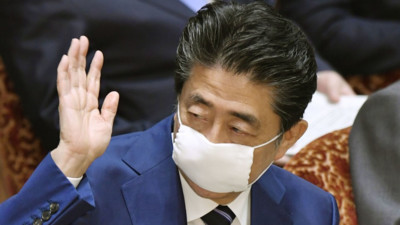News
State of Emergency in Japan in 7 Prefectures to Last 1 Month (Updated)
posted on by Jennifer Sherman
Update: Japanese Prime Minister Shinzo Abe announced a state of emergency for Tokyo, Osaka, Kanagawa, Saitama, Chiba, Hyogo, and Fukuoka on Tuesday evening. The state of emergency will last until May 6. Source: NHK
 NHK World reported on Monday that Japanese Prime Minister Shinzo Abe intends to declare a state of emergency on Tuesday in seven prefectures for about one month due to the outbreak of the new coronavirus disease (COVID-19) in the country. The planned declaration would cover the following prefectures: Tokyo, Kanagawa, Saitama, Chiba, Osaka, Hyogo, and Fukuoka.
NHK World reported on Monday that Japanese Prime Minister Shinzo Abe intends to declare a state of emergency on Tuesday in seven prefectures for about one month due to the outbreak of the new coronavirus disease (COVID-19) in the country. The planned declaration would cover the following prefectures: Tokyo, Kanagawa, Saitama, Chiba, Osaka, Hyogo, and Fukuoka.
Abe reportedly does not plan to order a "lockdown," and hopes to "maintain economic and social activities as much as possible." He noted that public transportation and grocery stores would remain open. Abe will consult on Tuesday an advisory panel made up of public health and medical experts to determine the necessity of a state of emergency.
The declaration would give prefectural governors the power to ask residents to refrain from leaving their homes for non-essential purposes, ask residents to "cooperate with measures to prevent the further spread of the virus," request or order school closures, restrict the operations of retailers and other places where people gather, use land and buildings without owner consent to build medical facilities, order logistics companies to deliver medial equipment and supplies, and expropriate medical supplies.
Tokyo reported 143 new infections from COVID-19 on Sunday — marking another day of record high increases, and bringing the number of total infections in Tokyo to 1,033. Health officials are particularly concerned that 64% of the new cases on Sunday, or 92 cases, had no clear infection routes. Knowing the infection routes is key to Japan's anti-COVID-19 policy until now. The country's efforts hinge on identifying and isolating clusters of infections as they crop up.
The metropolitan government previously asked high schools to remain closed until early May, and asked local education boards to consider the same for elementary and junior high schools, but did so with no current legal way to compel these entities to comply.
The first reported cases of COVID-19 were in Wuhan, China in December, and then the disease began to spread in varying rates and intensities across many parts of the globe through incubation in human hosts. The World Health Organization (WHO) declared a world health emergency on January 30, and announced on March 11 that it is classifying the outbreak as a pandemic. As of Sunday, the WHO reported that there are 1,133,758 infected individuals worldwide. 62,784 individuals have died from the disease.
As of Sunday, the WHO reported that Japan has 3,271 cases of COVID-19 with 70 deaths. These numbers do not include the number of cases from the Diamond Princess cruise ship docked in Yokohama. That cruise ship had 712 infected passengers with seven deaths.
The Japanese government is working to restrict travel to the country from many territories around the world.
Source: NHK
follow-up of Prime Minister Abe Declares State of Emergency in Japan (Updated)
this article has been modified since it was originally posted; see change history